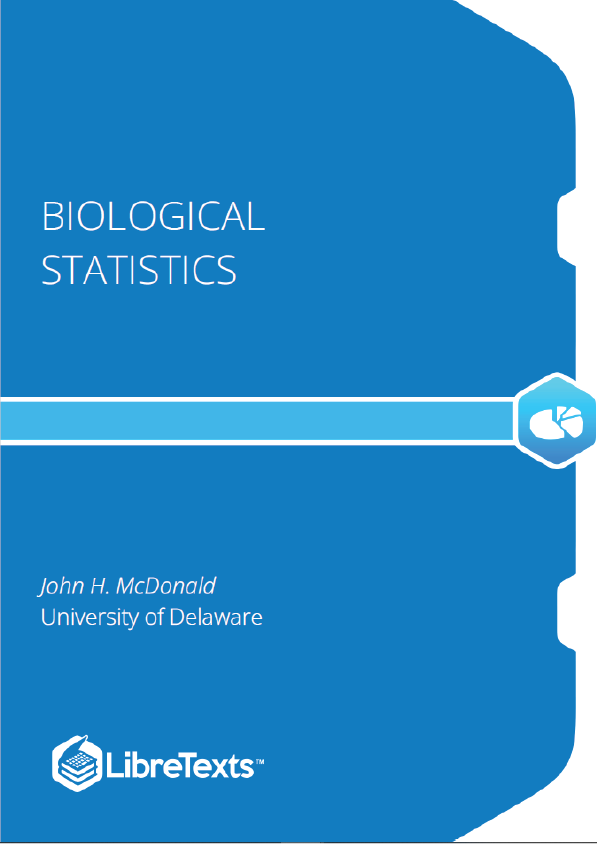The goal in that class is to teach biology students how to choose the appropriate statistical test for a particular experiment, then apply that test and interpret the results. In my class and in this textbook, I spend relatively little time on the mathematical basis of the tests; for most biologists, statistics is just a useful tool, like a microscope, and knowing the detailed mathematical basis of a statistical test is as unimportant to most biologists as knowing which kinds of glass were used to make a microscope lens.
Introduction
One of the first steps in deciding which statistical test to use is determining what kinds of variables you have. When you know what the relevant variables are, what kind of variables they are, and what your null and alternative hypotheses are, it’s usually pretty easy to figure out which test you should use. I classify variables into three types: measurement variables, nominal variables, and ranked variables. You’ll see other names for these variable types and other ways of classifying variables in other statistics references, so try not to get confused.
Measurement variables
Measurement variables are, as the name implies, things you can measure. An individual observation of a measurement variable is always a number. Examples include length, weight, pH, and bone density. Other names for them include “numeric” or “quantitative” variables.
Some authors divide measurement variables into two types. One type is continuous variables, such as length of an isopod’s antenna, which in theory have an infinite number of possible values. The other is discrete (or meristic) variables, which only have whole number values; these are things you count, such as the number of spines on an isopod’s antenna. The mathematical theories underlying statistical tests involving measurement variables assume that the variables are continuous. Luckily, these statistical tests work well on discrete measurement variables, so you usually don’t need to worry about the difference between continuous and discrete measurement variables. The only exception would be if you have a very small number of possible values of a discrete variable, in which case you might want to treat it as a nominal variable instead.
Circular variables
One special kind of measurement variable is a circular variable. These have the property that the highest value and the lowest value are right next to each other; often, the zero point is completely arbitrary. The most common circular variables in biology are time of day, time of year, and compass direction. If you measure time of year in days, Day 1 could be January 1, or the spring equinox, or your birthday; whichever day you pick, Day 1 is adjacent to Day 2 on one side and Day 365 on the other.











